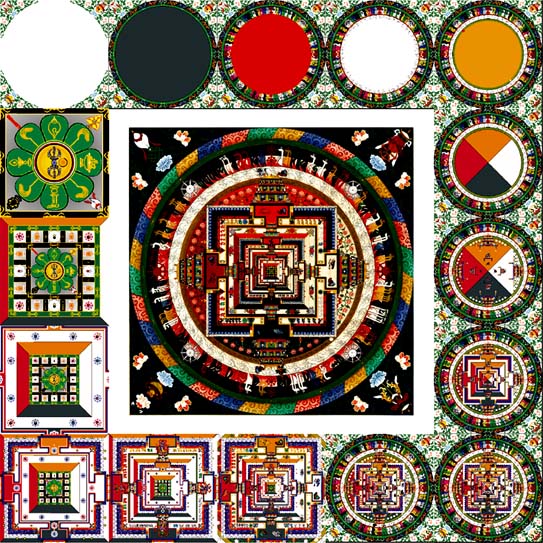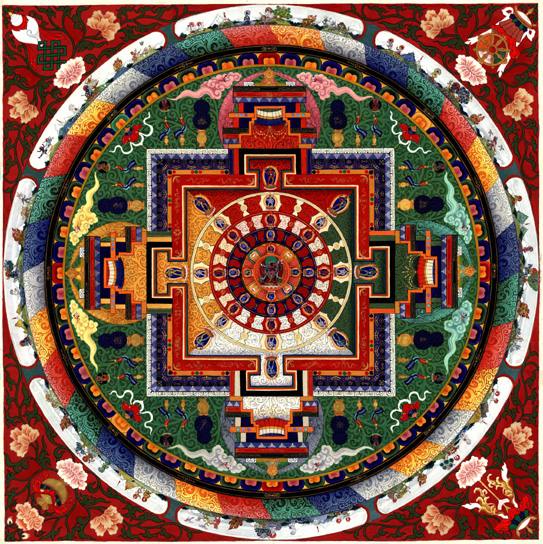 |
The Kalachakra Tantra (around
the eleventh century?), is known as the Wheel of Time. It is widely regarded
as the mandala of mandalas. It also represents the completion of the, seemingly,
limitless recursive development of mandala systems. There are 722 deities
in it, according to a commentary, making it virtually impossible to depict
all of them without omission. The Kalachakra mandala consists of four (body,
speech, mind, and bliss) main mandalas arranged from the bottom to the
top vertically. The three dimensional proportions correspond to both the
proportions of the Universe, and to the proportion of the Buddha's body
(implying that the macrocosm and microcosm are mathematically parallel).
The bulk of the iconometric canon of proportions in Tibetan Buddhist art
is mainly derived from the Kalachakra Tantra and the Samvarodaya Tantra
(the Tantra of Cakrasamvara).
|


